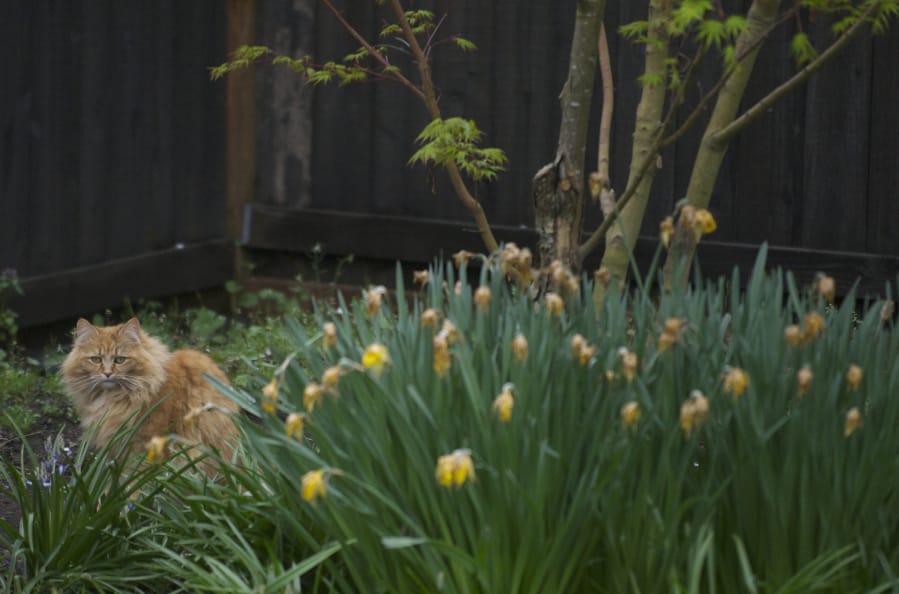Clark County’s animal control code just got a little friendlier to stray and feral cats.
At its Tuesday morning meeting, the Clark County Council unanimously passed an update to its animal control code that created a “community cat program.” The program is meant to recognize situations where a cat may not have a clear owner and instead will rely on multiple people — or none at all — for food.
Stacey Graham, president of the Humane Society for Southwest Washington, said at the meeting that feral cats that enter the shelter often can’t be adopted out because they are so unaccustomed to living with humans.
Although these stray or feral cats are likely capable of surviving on their own, releasing one back to where it was found would previously be considered abandonment under Clark County’s animal code. As a result, the cat effectively becomes the responsibility of the Humane Society, which contracts with the county for shelter services.
“Typically what happens is those cats are euthanized,” Graham said.
She said that there are about 40,000 to 50,000 feral cats in Clark County, many in rural areas. She said that last year, about 3,000 stray cats entered the Humane Society, with less than 3 percent redeemed by owners. She said that 30 percent of cats euthanized at the Humane Society are feral cats.
She said that the change in law will allow the Humane Society to vaccinate and sterilize these cats before releasing them back to where they were found.
She said that if stray or feral cats brought to the Humane Society appear healthy, it’s a sign that they have a source of food, possibly from one or more people it has tenuous ties to. She said that if a cat is removed from one of these areas, another will take its place.
The county has been working on an update to its code for years. In 2016, the city of Vancouver made a similar change.
Previously, the Feral Cat Coalition of Oregon and Audubon Society of Portland raised concerns that the policy would signal to the public that it’s acceptable to abandon cats and could have unintended consequences for wildlife. Neither organization sent representatives to the meeting to comment on the county’s code change.
Graham said that the Humane Society has a volunteer group that returns feral cats to where they were found and has also developed a program to educate residents on interactions with these animals. She also said that some wineries and warehouses want colonies of feral cats nearby to control rodent populations. She said that her organization has also developed a program to help them manage these colonies.
Councilor Julie Olson also asked about research showing how sterilizing feral cats before releasing them keeps their population down.
“Then you no longer have to worry about procreation,” said Graham. She added that because of the Humane Society’s efforts to sterilize animals, the overall cat population has decreased.




